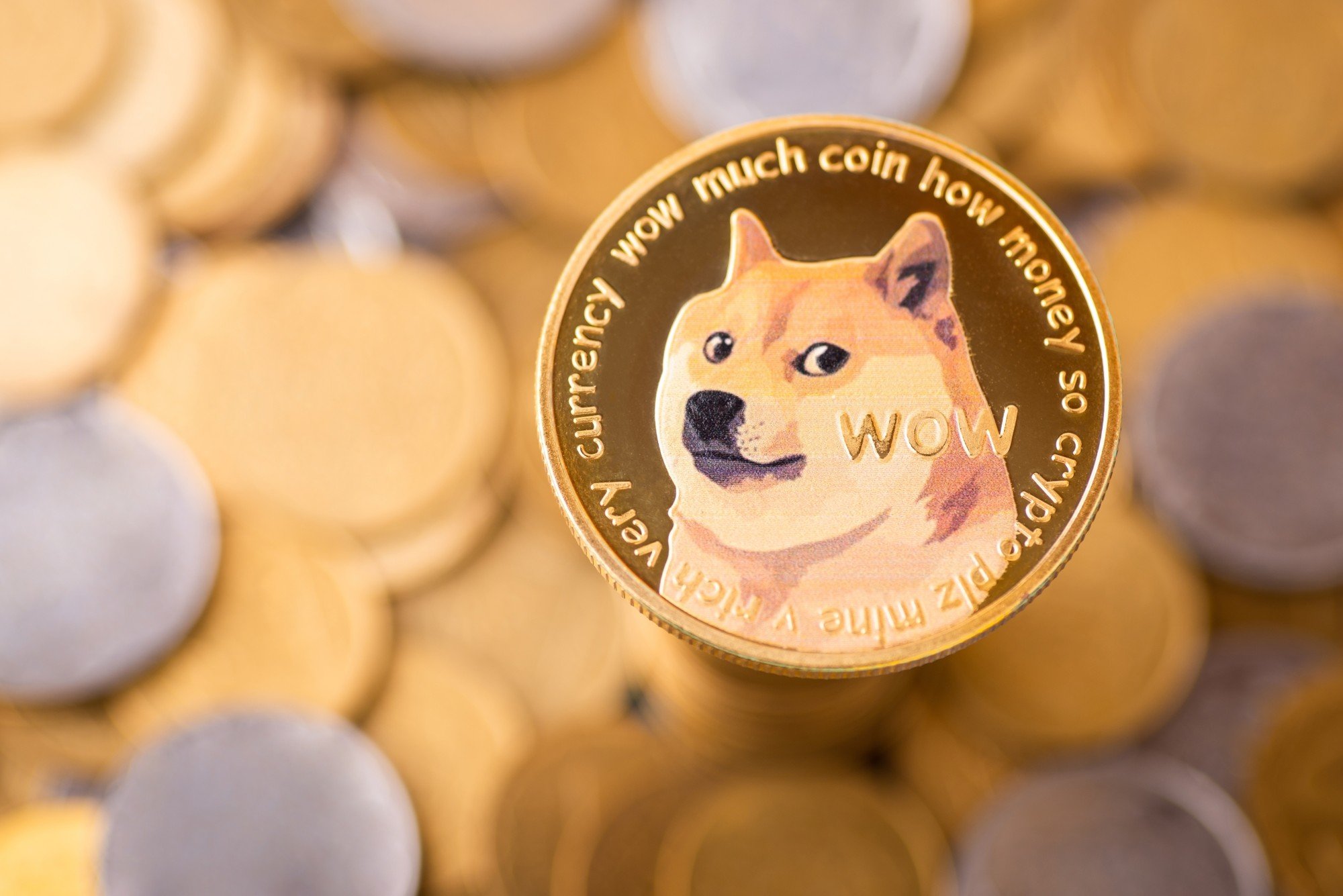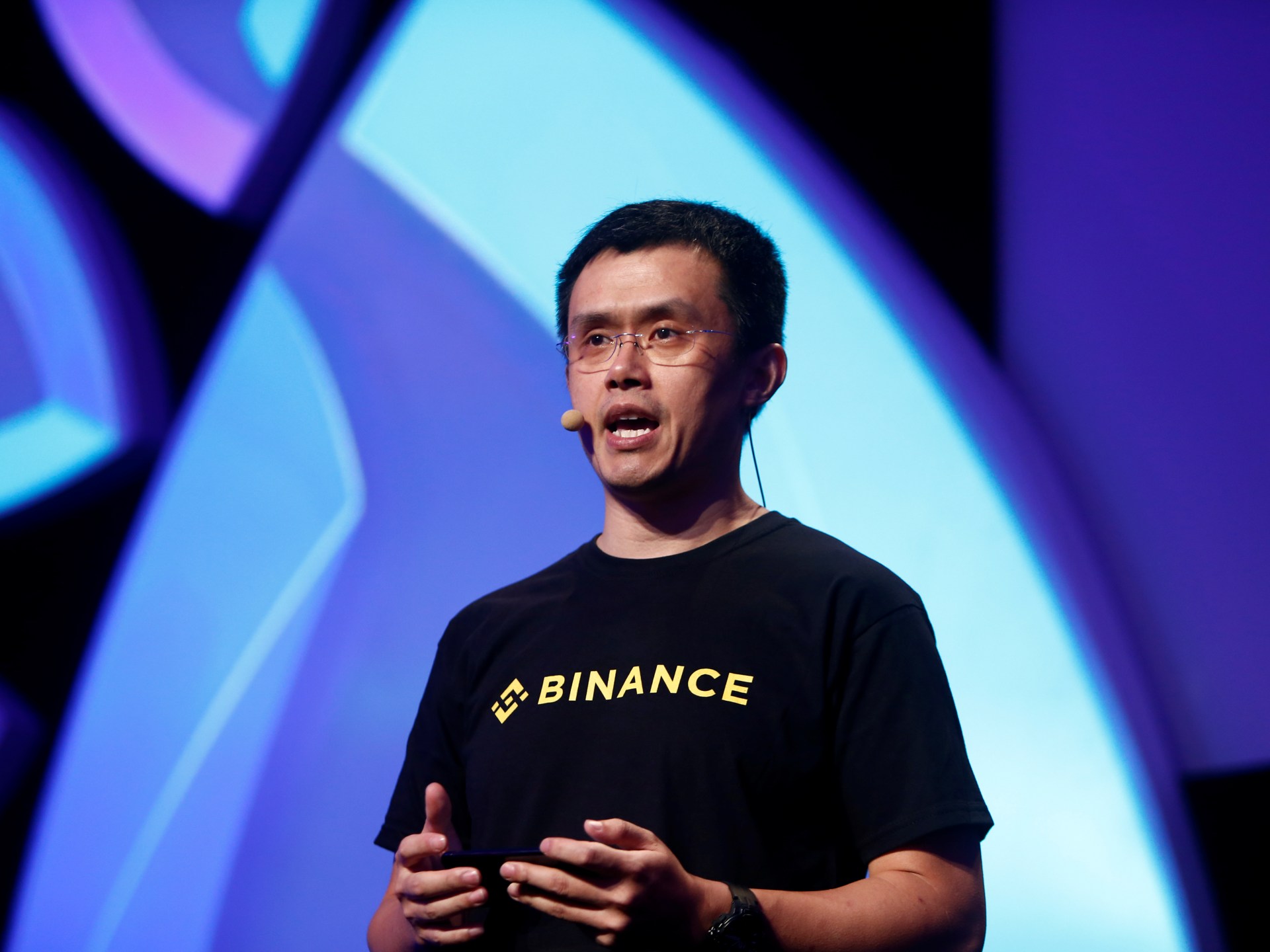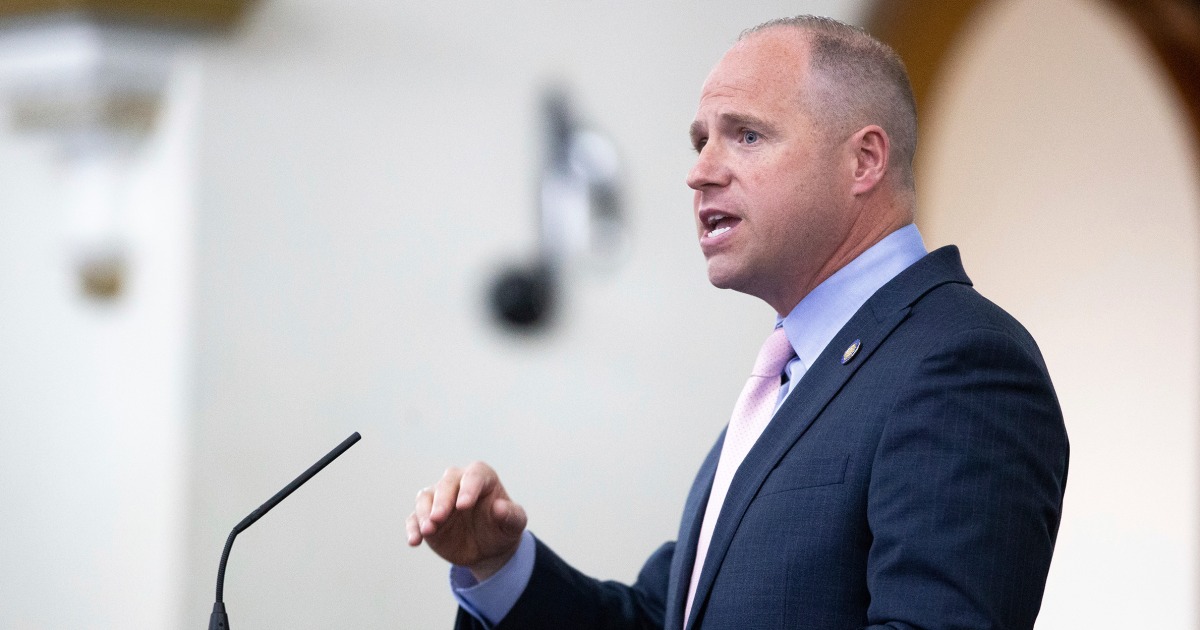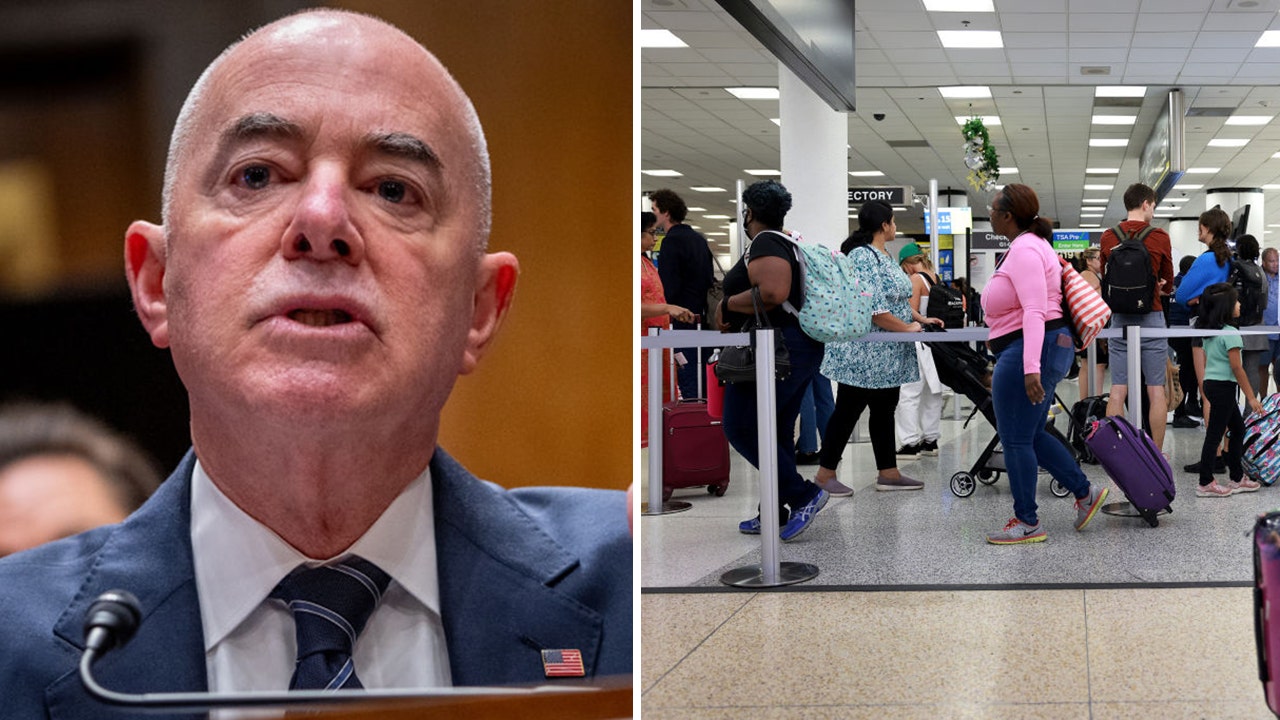Crypto
Cryptoverse: Ripple effect as explosive XRP leads market charge
/cloudfront-us-east-2.images.arcpublishing.com/reuters/HTH5NL2GW5MCLMZL7VKFK6HSUQ.jpg)
July 25 – XRP has become the unlikely white knight of crypto, thwarting its regulatory foes and dragging the market out of the doldrums.
The price of XRP popped 78% after a U.S. judge ruled on July 13 that issuer Ripple Labs’ sales of the token on public exchanges didn’t violate securities law, and it’s still up about 47%. Its market cap has ballooned to $36 billion from $25 billion and its crypto market share to 3.5% from 2% before the ruling, according to CoinMarketCap.
Ripple’s landmark victory has galvanized the wider market for altcoins – cryptocurrencies excluding bitcoin – as much of the regulatory scrutiny on the sector focuses on whether some tokens should be classed as more tightly-regulated securities.
“It’s a big milestone for the altcoins sector, it is fair to assume that if XRP is not a security, barely any other digital asset can be considered that way,” said Matteo Greco, analyst at fintech and blockchain investment firm Fineqia International.
Indeed, the altcoin market cap has jumped to $665.2 billion from $636.38 billion before the ruling, according to CoinGecko, while a Cryptoquant index of the prices of the coins targeted as potential securities by the SEC has jumped 11%.
“For the first time, it seems like we have rules of the road for how to evaluate these tokens,” said Ben Weiss, CEO of crypto ATM network CoinFlip.
The cheer spread throughout cryptoland, with bitcoin – which is generally considered a commodity rather than a security – touching a 13-month high after the ruling though it has since dropped back down below $30,000.
XRP VS STABLECOINS
It’s certainly not all smooth sailing for Ripple, or altcoins more generally, though. The SEC is likely to appeal the ruling, according to some legal experts, while trading volumes for the crypto space in general are still low compared to a year ago.
The lawsuit, combined with the rise of competitors such as stablecoins also hurt the token’s use in practical applications like payment settlements and remittances.
Ripple Labs said last week that its pursuit of sound crypto regulation in the U.S. was far from concluded. In the meantime, it said it would continue to invest in jurisdictions that have embraced clear regulatory frameworks.
The company was relisted by several crypto exchanges in the wake of its legal win, and some institutional investors are taking note; a Coinshares survey of 51 digital asset managers managing $900 billion in assets found 10% of investors are investing in altcoins, versus 5% last month, with some reducing positions in ethereum and bitcoin in favor of smaller altcoins like XRP and polkadot.
“Legal clarity on the token itself opens the door again to Ripple’s long-stated use cases as a settlement layer,” said Joseph Edwards, head of research at Enigma Securities.
He pointed to the massive growth of U.S. dollar stablecoins since 2020 as a factor for eroding XRP’s usage in settlements and remittances, as those tokens became favored for use in cross-border payments.
“A lot depends on how much dry powder Ripple Labs has to deploy to new business development initiatives,” said Edwards.
Reporting by Lisa Pauline Mattackal and Medha Singh in Bengaluru; Editing by Pravin Char
Our Standards: The Thomson Reuters Trust Principles.
Opinions expressed are those of the author. They do not reflect the views of Reuters News, which, under the Trust Principles, is committed to integrity, independence, and freedom from bias.

Crypto
Dog behind the meme that launched Dogecoin is a shiba inu former rescue pup

In 2010, two years after adopting the shiba inu, Sato posted a picture on her blog of Kabosu crossing her paws on the sofa and giving the camera a beguiling look.
That image became the “Doge” meme – and later an NFT digital artwork that sold for US$4 million.
“She is pulling a weird face,” Sato laughs. “Now I think she looks really nice” in the famous photo but “at first I thought it could be trashed”.
The meme grew from an online forum post into an anarchic in-joke that bounced from college bedrooms to office emails.
“One of my friends messaged me: ‘Isn’t this picture Kabosu?’ Then I searched for it and found all sorts of memes, like Kabosu turning into a doughnut,” Sato says.
The 62-year-old is now so used to “unbelievable” events that when Tesla boss Musk changed the icon for Twitter, now X, to Kabosu’s face last year, she “wasn’t even that surprised”.
“In the last few years I’ve been able to connect the online version of Kabosu, all these unexpected things seen from a distance, with our real lives.”
Kabosu spends most days resting in a cart at the kindergarten or on a big cushion at home, where fan-made Doge tributes adorn the walls.

The memes typically use goofy broken English to reveal the inner thoughts of Kabosu and other shiba inu “doge” – usually pronounced like pizza “dough” but with a “j” at the end.
“Very love. Such star OMG. So heart. Much drawing,” says one framed print using this signature “doge speak”.
Kabosu fell ill with leukaemia and liver disease at the end of 2022, and Sato is sure the “invisible power” of prayers from fans worldwide helped her pull through.

Then, in November 2023, a US$100,000 statue of Kabosu and her sofa crowdfunded by Own The Doge, a cryptocurrency organisation dedicated to the meme, was unveiled in a park in Sakura.
Sato and Own The Doge have also donated large sums to international charities, including more than US$1 million to Save the Children. The NGO says it is “the single largest cryptocurrency contribution” it has ever received.
“The Doge is the most popular dog of the modern era,” says Tridog, a pseudonymous member of Own The Doge, describing Kabosu as “the Mona Lisa of the internet”.

Dogecoin was started as a joke by two software engineers and is now the world’s eighth most valuable cryptocurrency, with a market cap of US$23 billion.
“The Doge meme was pretty big on the internet in 2013 and I spent a lot of time on Reddit and other forums back then,” says Dogecoin co-founder Billy Markus.
Markus, who is no longer affiliated with Dogecoin, was amused by the “silliness and innocence” of the memes.
Fellow founder Jackson Palmer “drank a beer and saw the doge meme and bitcoin in the news and thought saying he was gonna invest in Dogecoin would make a funny tweet”, he said.

Markus found the idea hilarious and created the coin in “a few hours” before contacting Palmer and taking it live.
“Lots of weird stuff happened after that,” he says.
Since then, Dogecoin has been backed by stoner hip-hop king Snoop Dogg, Shark Tank entrepreneur Mark Cuban and rock band Kiss’ bassist Gene Simmons, who once tweeted: “I bought Dogecoin … six figures.”
But its most keen supporter is probably the billionaire Musk, who jokes about the currency on X – sending its value soaring – and hails it as “the people’s cryptocurrency”.

Dogecoin has also inspired a plethora of other cheap and highly volatile “meme coins”, including spin-off Shiba Inu and others based on dogs, cats or Donald Trump.
A solitary figure wearing a Doge mask looks out over the Los Angeles skyline – this is Tridog, who says he has “worked for a dog photograph for almost three years”.
Own The Doge is his full-time job, and he preaches its motto D.O.G.E, or “Do Only Good Everyday”.

In 2021, Sato sold the viral photo of Kabosu as a non-fungible token (NFT), a digital ownership certificate that can be traded online, to a group of cryptocurrency art collectors called PleasrDAO for US$4.2 million.
That makes it “a top-five most expensive photo ever sold”, Tridog says.
PleasrDAO split the NFT’s value into a brand-new meme coin called $DOG, allowing many people to collectively “own” the meme.
Own The Doge has brought fans and other meme stars to Japan to meet Kabosu and Sato, and it recently secured the intellectual property rights to the famous photo, paving the way to make Doge toys, films and other products.
As a rescue dog, Kabosu’s real birthday is unknown, but Sato estimates her age at 18 – past the average lifespan for a shiba inu.
When Kabosu dies, “the world will mourn”, Tridog says, but “a legend always lives on”.
He hopes people will remember “the deeper values” behind the Doge meme: “the wholesomeness, the silliness, the not taking yourself too seriously.”
Crypto
Former Binance CEO CZ sentenced to four months

Changpeng Zhao, the former chief executive of Binance, was sentenced on Tuesday to four months in prison after pleading guilty to violating US money-laundering laws at the world’s largest cryptocurrency exchange.
The sentence was imposed by United States District Judge Richard Jones in Seattle, who rejected prosecutors’ request that the 47-year-old Zhao serve a three-year term.
Once considered the most powerful person in the cryptocurrency industry, Zhao, known as “CZ,” is the second major crypto boss to be sentenced to prison after Sam Bankman-Fried. In March, Bankman-Fried received 25 years behind bars for stealing eight billion dollars from customers of his now-bankrupt FTX exchange.
Zhao pleaded guilty in November to one count of failing to take required anti-money-laundering measures and stepped down as Binance agreed to pay $4.3bn to settle related allegations.
US officials said Zhao deliberately looked the other way as people conducted transactions that supported child sex abuse, the illegal drug trade and “terrorism”.
“I failed here,” Zhao said before US District Judge Richard A Jones issued the sentence. “I deeply regret my failure, and I am sorry.”
“I believe the first step of taking responsibility is to fully recognise the mistakes. Here I failed to implement an adequate anti-money-laundering program … I realise now the seriousness of that mistake”, he said.
Prosecutors had told the judge a tough sentence would send a clear signal to other would-be criminals.
“We are not suggesting that Mr. Zhao is Sam Bankman-Fried or that he is a monster,” prosecutor Kevin Mosley said. But Zhao’s conduct, he said, “wasn’t a mistake. This wasn’t a regulatory ‘oops.’”
The three-year prison term prosecutors sought was more than twice the guideline range for the crime. If he did not receive time in custody for the offence, no one would, rendering the law toothless, they argued.
Zhao had been free on a $175m bond, and agreed not to appeal any sentence within federal guidelines. Zhao also paid $50m to the Commodity Futures Trading Commission.
Trades in violation of US sanctions
Binance allowed more than 1.5 million virtual currency trades, totalling nearly $900m, that violated US sanctions, including ones involving Hamas’s Qassam Brigades, al-Qaeda and Iran.
“He made a business decision that violating US law was the best way to attract users, build his company, and line his pockets,” the US Department of Justice wrote in a sentencing memorandum filed last week.
Zhao’s lawyers insisted he should receive no prison time at all, citing his willingness to come from the United Arab Emirates, where he and his family live, to the US to plead guilty, despite the UAE’s lack of an extradition treaty with the US.
No one has ever been sentenced to prison time for similar violations of the Bank Secrecy Act, defence lawyers Mark Bartlett and William Burck told the judge Tuesday, and Zhao began making changes to make Binance a model of compliance with banking transparency regulations before stepping down.
“There is no excuse for my failure to establish the necessary compliance controls at Binance,” Zhao wrote in a letter to the court. “I wish I could change that part of Binance’s story. But under my direction, Binance has now implemented the most stringent anti-money laundering controls of any non-US exchange, and those controls have been in place since 2022.”
Prosecutors said no one had ever violated the Bank Secrecy Act to the extent Zhao did.
“He says in hindsight he should have done a better job,” Justice Department lawyer Kevin Mosley told the court. “This wasn’t a mistake. When Mr Zhao violated the BSA he was well aware of the requirements.”
Zhao knew that Binance was required to institute anti-money-laundering protocols, but instead directed the company to disguise customers’ locations in the US to avoid complying with US law, prosecutors said.
Several other crypto moguls are also in the crosshairs of US authorities after the collapse of cryptocurrency prices in 2022 exposed fraud and misconduct across the industry.
Crypto
ED & FBI Teamed Up for $30 Billion Cryptocurrency Scam

Indian authorities, together with the FBI, have cracked down on a massive Rs 3,000 crore ($30 billion) scam involving digital currencies in Uttarakhand. This teamwork led to the arrest of two suspects accused of running an international drug trafficking ring.
The operation kicked off when the Enforcement Directorate (ED) started looking into the matter in August 2023. With key info from US authorities, they pinpointed two Indian nationals, Parvinder Singh and Banmeet Singh, as key players in the drug network. The duo was nabbed from Haldwani, Uttarakhand, on April 27, after detailed raids.
The FBI, working in tandem, seized digital currency assets worth around Rs 1,500 crore, directly linked to this criminal network. Meanwhile, the ED also recovered important documents that are crucial for the case. These documents were shared with the FBI for further analysis and evidence collection.
In a related search, law enforcement raided Parvinder Singh’s place in Haldwani to seize electronic devices like computers and smartphones, believed to have been used in the crimes.
This joint effort by Indian and US authorities marks a significant victory in fighting cybercrime and drug trafficking. It’s a testament to international cooperation in combating such illegal activities.
Also Read: CIFDAQ Brings Cutting-Edge Blockchain Solutions to India
-

 Education1 week ago
Education1 week agoVideo: Dozens of Yale Students Arrested as Campus Protests Spread
-

 World1 week ago
World1 week agoEU sanctions extremist Israeli settlers over violence in the West Bank
-

 Politics1 week ago
Politics1 week agoDemocrats hold major 2024 advantage as House Republicans face further chaos, division
-

 Politics1 week ago
Politics1 week agoFetterman hammers 'a–hole' anti-Israel protesters, slams own party for response to Iranian attack: 'Crazy'
-

 World1 week ago
World1 week agoPeriod poverty still a problem within the EU despite tax breaks
-

 Politics1 week ago
Politics1 week agoA battle over 100 words: Judge tentatively siding with California AG over students' gender identification
-

 Movie Reviews1 week ago
Movie Reviews1 week agoShort Film Review: Wooden Toilet (2023) by Zuni Rinpoche
-

 News1 week ago
News1 week agoUniversal Studios Tram Crashes, 15 Injured, 1 Critical




















